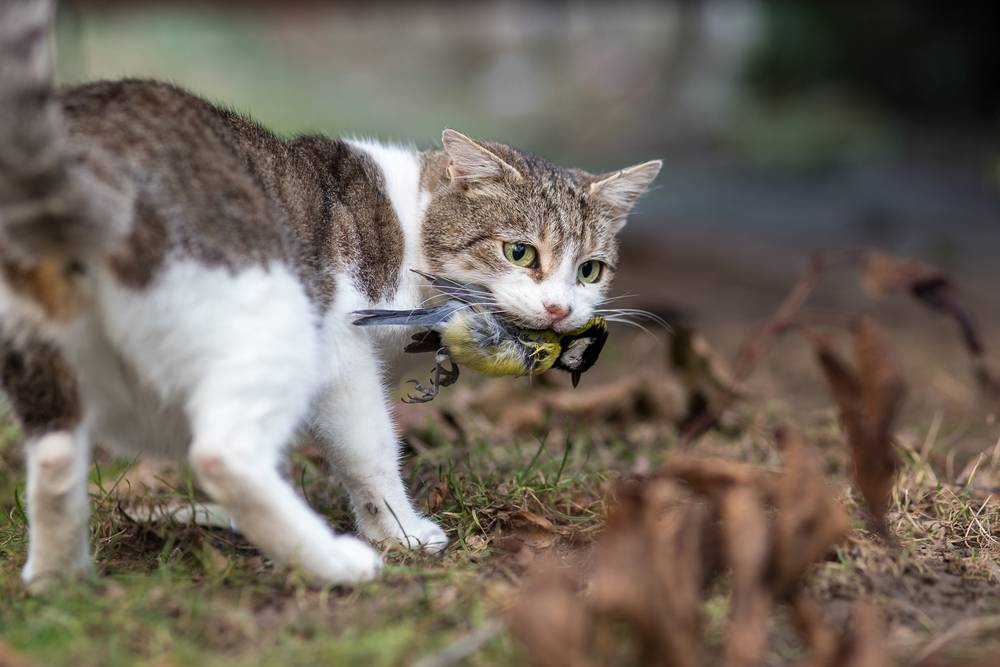Bird flu, which has killed millions of birds across the US, has now claimed 20 big cats at a Washington sanctuary.
The sanctuary in Washington state has reported the deaths of 20 big cats, including cougars, African servals, and an Amur-Bengal tiger mix, in one of the most severe feline outbreaks ever recorded in the United States.
The virus spreads easily through respiratory secretions and bird carcasses, making outdoor cats and carnivorous mammals particularly susceptible.
In a Facebook post on December 27, the Wild Felid Advocacy Centre described the virus as “a devastating viral infection, carried by wild birds, [that] spreads primarily through respiratory secretions and bird-to-bird contact and can also be contracted by carnivorous mammals that ingest birds or other products.”
The sanctuary has placed its remaining animals under quarantine as officials scramble to contain the outbreak.
Big Cats Among the First Mammalian Victims
The first fatality occurred around Thanksgiving when a 17-year-old cougar, Hannah Wyoming, stopped eating and died within 24 hours. Mark Mathews, the centre’s cofounder, told CNN,
“We thought we were doing everything we could to avoid anything like this from happening. Losing so many of our beloved animals so quickly has been devastating.”

Among the deceased are five African servals, four cougars, four bobcats, two Canada lynxes, and an Amur-Bengal tiger named Tabbi, described as a “fun-loving tiger” with a “super personality.”
According to Mathews, Tabbi’s passing has left staff devastated: “Every time I’d come up, she’d be running to meet me. People just loved her.”
As of now, only 17 of the sanctuary’s original 37 cats remain. One African serval, Neiko, is in critical condition, fighting to regain mobility in his back legs.
The sanctuary is under quarantine, working closely with animal health officials to disinfect enclosures and prevent further losses.
How Bird Flu is Spreading to Mammals
The current outbreak of highly pathogenic avian influenza (HPAI) highlights its capacity to spill over into mammals, including domestic and wild cats.
Bird flu primarily spreads through respiratory secretions, faeces, or direct contact with infected birds. Carnivorous mammals, such as cats, are particularly at risk when they consume infected birds or their products.
The virus can persist in the environment for extended periods, especially in cooler temperatures. Cats, whether in sanctuaries or domestic settings, may inadvertently come into contact with these environmental reservoirs, increasing their risk of infection.
Why Cats Are Particularly Vulnerable to Bird Flu

Cats are highly susceptible to bird flu due to their carnivorous diet and frequent exposure to bird carcasses.
Once infected, the virus rapidly attacks the respiratory system, often causing symptoms such as lethargy, fever, and pneumonia-like conditions. Symptoms can progress rapidly, often resulting in death within 24 hours.
Experimental studies on cats infected with earlier H5N1 strains demonstrated that the virus replicates efficiently in their respiratory tract. This replication leads to severe lung damage, contributing to the high fatality rate observed in affected felines.
Could Bird Flu in Mammals Increase Pandemic Risk?
Experts warn that prolonged exposure to infected mammals creates opportunities for mutations, potentially increasing transmissibility or severity.
Dr Angela Rasmussen, a virologist specialising in emerging infectious diseases, expressed concern about the growing number of human cases.
So I’m not super worried about these mutations. They were low-frequency and have been seen before in patients with severe disease.
What I AM worried about are the growing number of human cases in the middle of flu season. Reassortment causes pandemics. IMO that’s a bigger risk.
— Dr. Angela Rasmussen (@angie_rasmussen) December 27, 2024
Rasmussen also noted the inherent unpredictability of viral mutations: “We don’t know what combination of mutations would lead to a pandemic H5N1 virus and there’s only so much we can predict from these sequence data. But the more humans are infected, the more chances a pandemic virus will emerge.”
How Bird Flu in Mammals Could Threaten Human Health
The current outbreak of highly pathogenic avian influenza (H5N1) in the United States has prompted close monitoring by the Centers for Disease Control and Prevention (CDC).
Although the virus predominantly affects birds, it has now spread to mammals, including cats and dairy cattle, raising concerns about its potential to infect humans.
Human Cases in 2024
As of December 27, the CDC has confirmed 66 human cases of H5N1 in the United States during the 2024 outbreak.
Confirmed cases have been linked to exposure in dairy herds and poultry operations, while probable cases include exposures from backyard flocks or wild birds. To date, no sustained person-to-person transmission of H5N1 has been documented.
How Humans Can Reduce the Risk of Bird Flu Transmission
The CDC has outlined several key actions individuals can take to reduce transmission risks:
1. Avoid Direct Contact with Wild Birds
Wild birds are a primary reservoir for the virus. The CDC advises avoiding direct contact with them, especially if they appear sick or are found dead. Instead, report such cases to local wildlife authorities.
2. Follow Biosecurity Measures Around Animals
People working with poultry, dairy cattle, or other potentially infected animals should:
- Wear personal protective equipment (PPE), including gloves, masks, and goggles, when handling animals or cleaning enclosures.
- Follow strict biosecurity protocols, such as disinfecting equipment and clothing after animal contact.
3. Safe Food Practices
Avoid consuming raw or undercooked poultry, eggs, or dairy products. Always choose pasteurised milk and cook poultry to an internal temperature of 74°C to kill any potential viruses.
4. Get a Seasonal Flu Vaccine
While the seasonal flu vaccine does not prevent bird flu, it reduces the risk of co-infections with human influenza. Coinfections can create conditions that allow for genetic mixing between viruses, which could lead to new, more transmissible strains.
5. Stay Informed and Monitor Symptoms
Those exposed to sick birds or mammals should monitor their health for symptoms like fever, cough, or fatigue. If symptoms develop, seek medical attention immediately and inform healthcare providers about possible exposure to bird flu.

